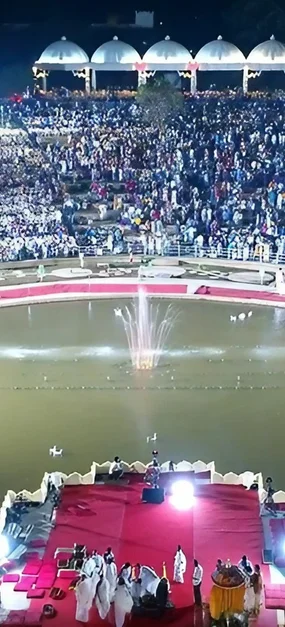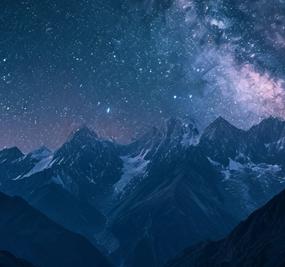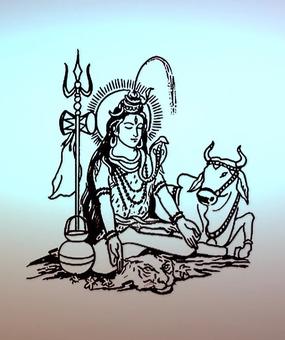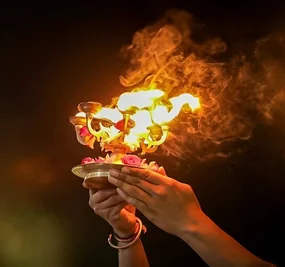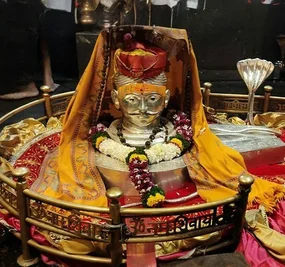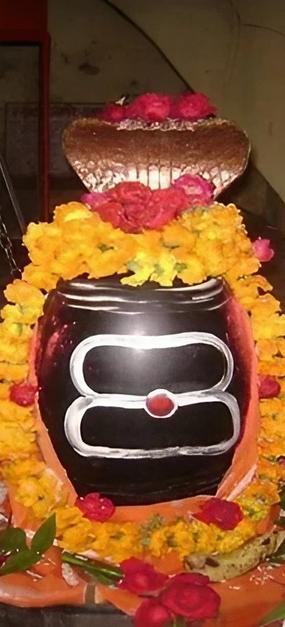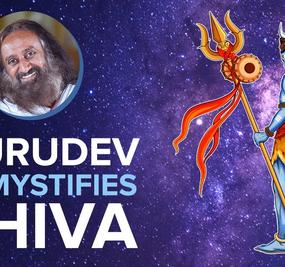Jyotirlingas are sacred shrines of Lord Shiva; it is believed that Lord Shiva himself visited these places and hence they have a special place in the hearts of devotees. There are 12 of them in India.
Jyotirlinga means ‘column or pillar of light’. The ‘stambha’ symbol represents that there is no beginning or end.
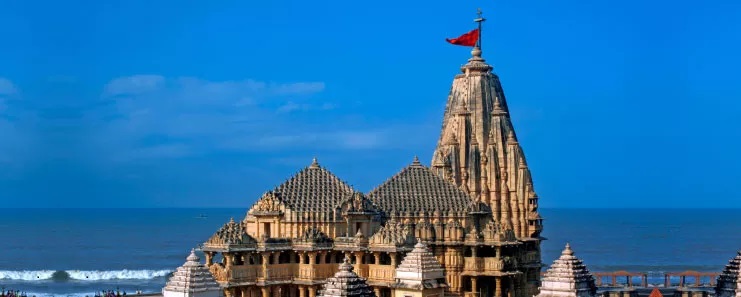
When Lord Brahma and Lord Vishnu had an argument about who was the supreme god, Lord Shiva appeared as a column of light and asked each one to find the ends. Neither could do it. It is believed that the places where these columns of light fell is where the jyotirlingas are located.
The most sacred of the 12 jyotirlingas in India is the Somnath Jyotirlinga.
Where is the Somnath Jyotirlinga located?
The Somnath temple is located in Prabhas Patan in Saurashtra, West Gujarat in India – at the confluence of the mythological Saraswati, Hiranya and Kapila rivers – the Triveni Sangam.
It is considered to be the first of the jyotirlingas – the first place where Lord Shiva manifested himself.
History of Somnath Jyotirlinga
It is believed that the original temple was built by the Moon God with gold in the Satya Yuga; by Ravana in Treta Yuga in silver; and by Lord Krishna in Dwapara Yuga in sandalwood.
This temple has been looted and demolished many times by various invaders – by Mahmud of Ghazni (1024), Afzal Khan, Ala-ud-din Khilji’s commander (1296), Muzaffar Shah (1375), Mahmud Begada (1451), and later Aurangzeb (1665).
Many rulers reconstructed the temple: Shri Vikramaditya of Ujjaini (about 2500 years ago), the Vallabhi kings (in the period 480-767 CE), Bhimadeva of Anhilawada (in 11th century AD), and Khangara, the king of Junagadh (in 1351 AD) among many others.
It has been reconstructed about 17 times! The modern structure has been constructed by India’s former deputy Prime Minister Sardar Vallabhai Patel between 1947 and 1951 in sandstone.
What is the story behind Somnath Jyotirlinga?
It is believed that Chandra, the moon god, was married to the 27 daughters of Daksha Prajapati. However, he favored Rohini over all the rest. This angered Prajapati, who insisted that he be impartial in his affections. When Chandra did not heed his warnings, Prajapati cursed him and made him lose his luster.
Without moonlight, the world became dark; so all the gods requested Prajapati to retract his curse. Daksha suggested that Chandra pray to Lord Shiva, which is why the Lord is referred to as Somnath or Someshwar, Lord of the Moon. It is said that Chandra also bathed in the Saraswati river to regain his luster, which is the reason for the waxing and waning of the moon and the tides in this seashore location.
Interesting facts about Somnath Jyotirlinga
- A chapter in the Skanda Purana, Prabhasa Khanda mentions this temple. It is also mentioned in the Rig Veda and the Bhagavat.
- The temple is built in such a location that there is no land in a straight line to its south till the Antarctica. This is inscribed on one of the pillars – since 7 AD. This makes it a sea-protected site.
- It is believed that the Shivalinga was hidden within the hollowness of the Syamantak Mani or the philosopher’s stone (associated with Lord Krishna) – a stone with alchemic properties – able to produce gold. This stone was also believed to have magnetic properties which enabled the Shivalinga to remain suspended in mid-air!
While you can visit this pilgrimage center all through the year, winter (October to March) would be the ideal time to visit it. Visiting it during Mahashivratri (8th March this year) would be the ultimate treat for any devotee!
Read about other Jyotirlinga Temples
- 12 Jyotirlingas in India
- Trimbakeshwar Jyotirlinga
- Rameshwaram Jyotirlinga
- Kedarnath Jyotirlinga
- Grishneshwar Jyotirlinga
- Mahakaleshwar Jyotirlinga
- Mallikarjuna Jyotirlinga
- Bhimashankar Jyotirlinga
- Omkareshwar Jyotirlinga
- Nageshwar Jyotirlinga
- Somnath Jyotirlinga
- Baidyanath Jyotirlinga
- Vishwnath Jyotirlinga



